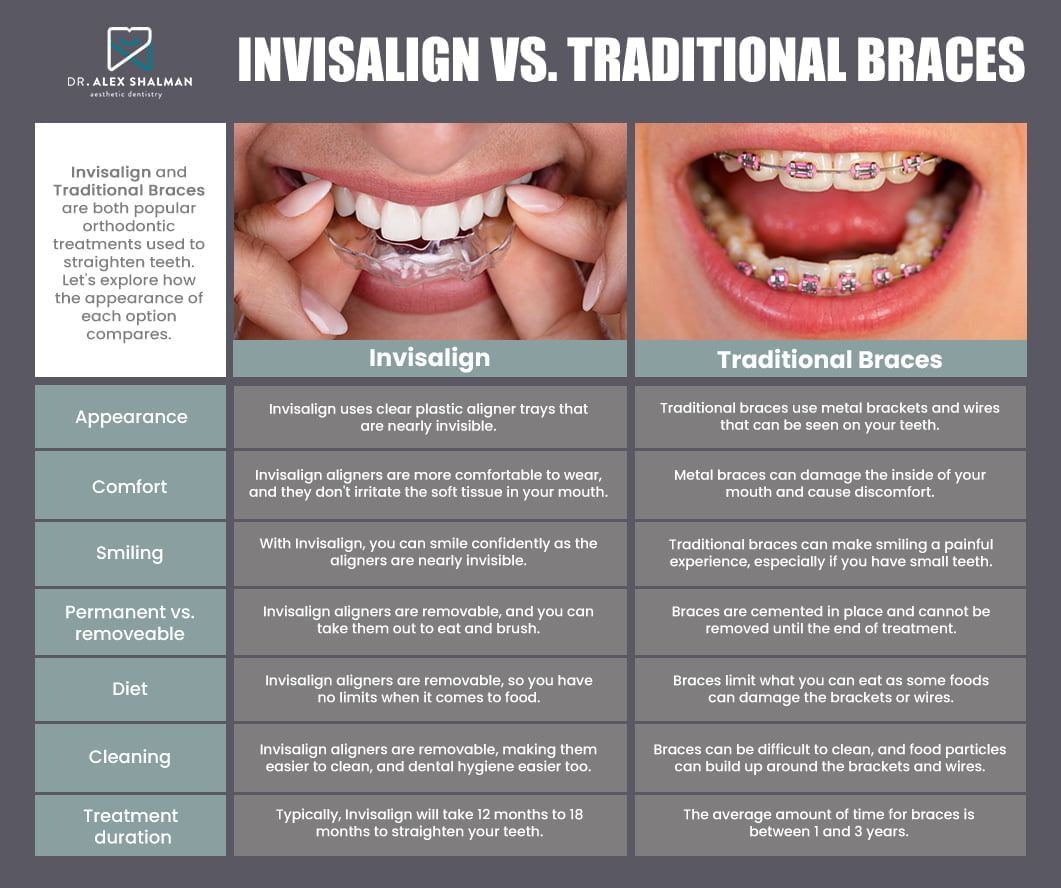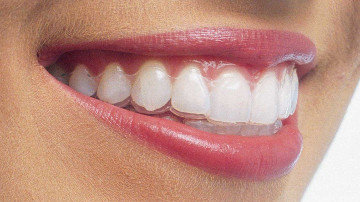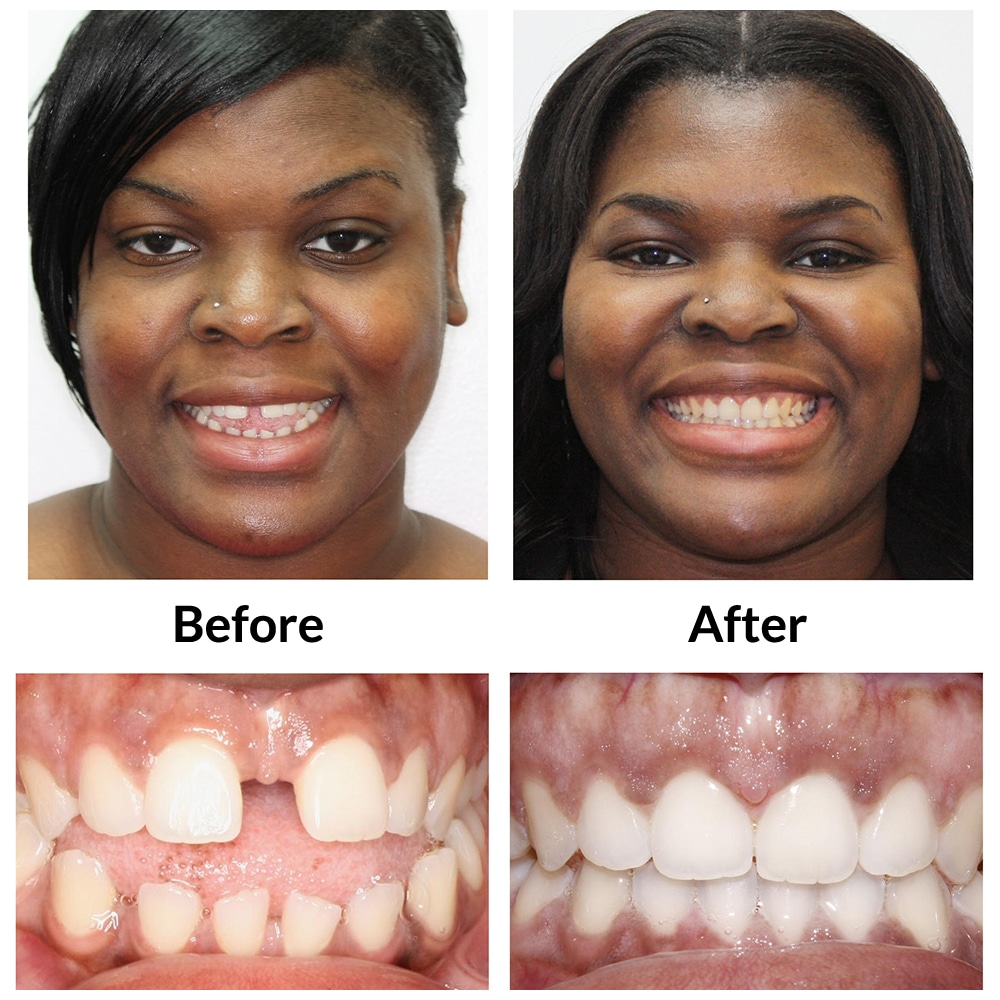The Expense of Invisalign: Understanding the Investment in Your Smile
The Expense of Invisalign: Understanding the Investment in Your Smile
Blog Article
Invisalign vs. Conventional Dental braces: Which Choice Is Right for You?
When considering orthodontic treatment, the option between Invisalign and typical braces offers several vital aspects that merit cautious evaluation. Invisalign provides a very discreet alternative with detachable aligners, while standard braces offer a much more noticeable yet effective option for extreme imbalance. Each alternative incorporates distinct advantages and downsides connected to appearances, convenience, therapy period, and price. Recognizing these subtleties is critical for making an educated choice that lines up with your personal preferences and lifestyle. The question continues to be: which alternative will ideal fulfill your orthodontic requirements and expectations?
Summary of Therapy Choices

On the other hand, conventional dental braces are composed of metal brackets and cords that are bonded to the teeth. This technique uses continuous pressure with time to achieve positioning. While reliable for complex orthodontic issues, standard dental braces require routine visits for modifications and can posture challenges in maintaining oral health as a result of the trouble of cleaning around cords and braces.
Both options have their benefits, and the option commonly rests on specific dental conditions, way of life choices, and person conformity. Ultimately, seeking advice from an orthodontic specialist is critical for determining the most suitable treatment plan tailored to individual needs. Comprehending the nuances of each choice can substantially affect the general success of orthodontic treatment.
Visual Factors To Consider
A considerable element influencing the option between Invisalign and typical braces is the aesthetic appeal each treatment provides. Invisalign aligners are crafted from clear plastic, making them essentially undetectable when used. This discreet appearance is specifically interesting grownups and teens that might feel self-conscious about their orthodontic therapy. The capability to preserve a natural smile throughout the placement process can considerably enhance the person's self-confidence in professional and social settings.
On the other hand, standard dental braces consist of metal braces and wires, which can be extra obvious. While developments in orthodontic technology have actually resulted in the development of smaller sized brackets and tinted elastics, standard braces still keep an even more conspicuous account. For some people, the visibility of dental braces may discourage them from seeking essential treatment.
Ultimately, the option between Invisalign and traditional dental braces may depend upon personal choices pertaining to aesthetics. People who prioritize discernment typically favor Invisalign, while those that are much less concerned concerning visibility might select traditional dental braces. Comprehending the aesthetic ramifications of each option is crucial for making a notified decision that aligns with one's way of living and choices.
Comfort and Convenience

In regards to comfort, Invisalign aligners are detachable, making it possible for individuals to appreciate their favored foods without restriction and keep optimal oral health. Cleaning and flossing are simplified, as the aligners can be obtained during these regimens, whereas traditional dental braces require careful steering around wires and brackets.
Additionally, Invisalign's progressive system permits less orthodontic visits. People generally get multiple collections of aligners simultaneously, which can enhance the treatment procedure and decrease time spent in the orthodontist's chair. In contrast, traditional braces require routine modifications, making them less hassle-free for those with active routines. Invisalign. Overall, the convenience and ease of Invisalign make it an attractive choice for numerous individuals seeking orthodontic therapy.
Therapy Period and Effectiveness
While both Invisalign and traditional braces work in fixing dental imbalances, the duration of therapy can differ substantially between both options. Typically, Invisalign treatment can take anywhere from 12 to 18 months, depending upon the intricacy of the case. The clear aligners work by progressively shifting teeth right into their wanted placements, and routine follow-ups with an orthodontist aid guarantee progress stays on track.
In comparison, typical dental braces often need a longer dedication, usually varying from 18 months to three years. This results from their fixed nature and using cables and braces, which can be extra reliable for intricate situations and extreme misalignments (Invisalign). The therapy effectiveness of typical braces is well-documented, as they more enable exact changes and greater control over tooth motion
Inevitably, the selection between Invisalign and typical braces might depend upon both the expected treatment duration and the certain dental issues available. Consulting with an orthodontist is vital, as they can give tailored recommendations based on specific demands, making certain the picked approach lines up with wanted durations and outcomes.
Cost Comparison and Insurance Coverage Options
Price plays a considerable duty in the decision-making process for individuals considering orthodontic treatment, whether choosing Invisalign or traditional dental braces. Generally, the price of Invisalign arrays from $3,000 to $8,000, while conventional braces usually set you back in between $2,000 and $6,000. Variables affecting these costs consist of the intricacy of the situation, the duration of therapy, and geographical place.
Several dental insurance policy strategies provide partial coverage for orthodontic treatments, but the specifics can differ commonly. Usually, conventional braces may be much more regularly covered by insurance coverage strategies compared to Invisalign, which some insurance firms classify as a cosmetic treatment.
In addition, a number of orthodontic practices use flexible repayment strategies, making both therapy choices more easily accessible. Individuals must ask about possible funding choices and discount rates for ahead of time payments. Evaluating the total cost, including insurance coverage benefits and payment strategies, is crucial for making an educated choice that aligns with both visual preferences and budget plan considerations.

Conclusion
In recap, the option in between Invisalign and conventional dental braces rests on several aspects, including aesthetic choices, comfort, therapy duration, and expense. Invisalign offers a discreet, detachable choice that assists in oral hygiene and nutritional flexibility, while typical dental braces may be better for complicated oral concerns and frequently come at a lower cost factor. Inevitably, consultation with an orthodontist is important to evaluate individual scenarios and identify one of the most suitable treatment option for achieving ideal dental positioning.
When thinking about orthodontic therapy, the selection in between Invisalign and useful content typical dental braces provides numerous crucial aspects that warrant mindful assessment.Contrasting Invisalign and standard braces reveals distinct treatment options for orthodontic modification.While both Invisalign and traditional braces are efficient in dealing with dental misalignments, the period of therapy can differ substantially between the 2 choices.Cost plays a substantial function in the decision-making procedure for people considering orthodontic therapy, whether opting for Invisalign or typical dental braces.In summary, the option between Invisalign and typical dental braces hinges on numerous aspects, including aesthetic preferences, convenience, treatment duration, and this post cost.
Report this page